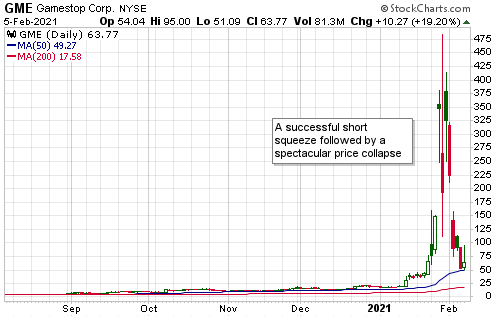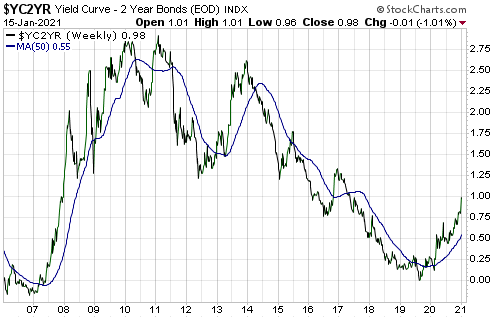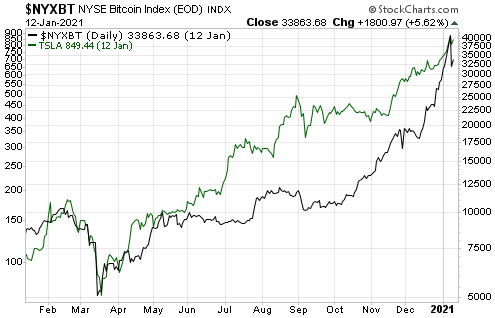At any given time there will be many investable themes ‘on the go’ within the financial markets, but due to time constraints we cannot cover all or even most of these themes at TSI. Instead, we pick out a few to focus on.
For the information of non-subscribers, here is a summary of the themes that we focused on during the second half of last year and that remain focal points of the regular TSI commentaries.
1) Aggressive monetary and fiscal stimulus will create the illusion of global economic strength (an artificial economic boom).
2) The rising trend in inflation expectations that began during the first half of 2020 will extend through the first half of 2021 and possibly for years to come.
3) The US dollar is immersed in a cyclical bear market that began in March of 2020.
4) Multi-year bullish trends are underway in industrial and agricultural commodities.
5) The electrification of transport is an unstoppable global trend that will have major bullish implications for certain commodities, especially lithium, manganese and the rare-earth elements.
6) The cannabis-legalisation trend in the US is accelerating and will enable US-focused cannabis companies to achieve rapid sales growth during 2021-2022.
7) Gold will perform poorly relative to industrial commodities until the transition to the next economic bust phase begins.
Our own account has some exposure to other themes, but the above list covers the ones we have been concentrating on as far as the TSI commentaries are concerned. We expect that all of the above will remain applicable over the coming few months, but that changes will be required at some point this year due to prices becoming too stretched to the upside or signs of an economic downturn becoming evident in our favourite leading indicators or “inflation” moving well beyond what the Fed deems appropriate.
 Print This Post
Print This Post



